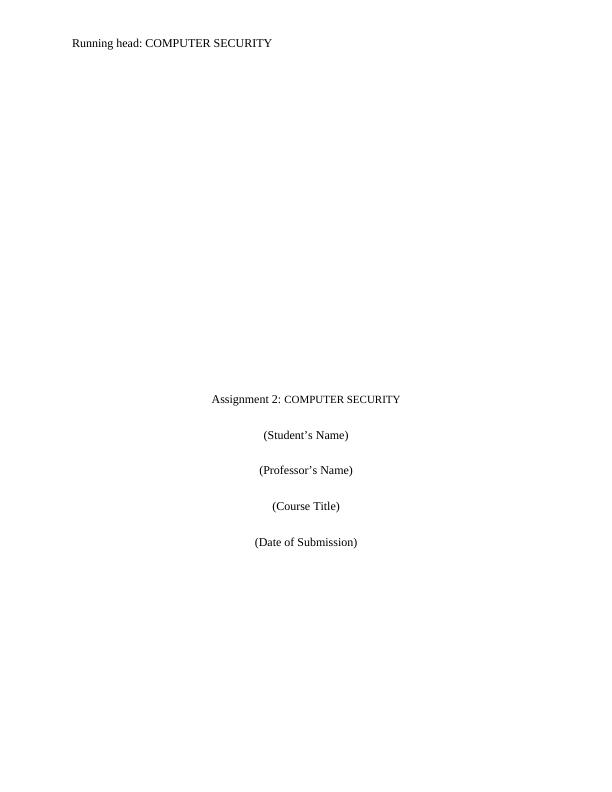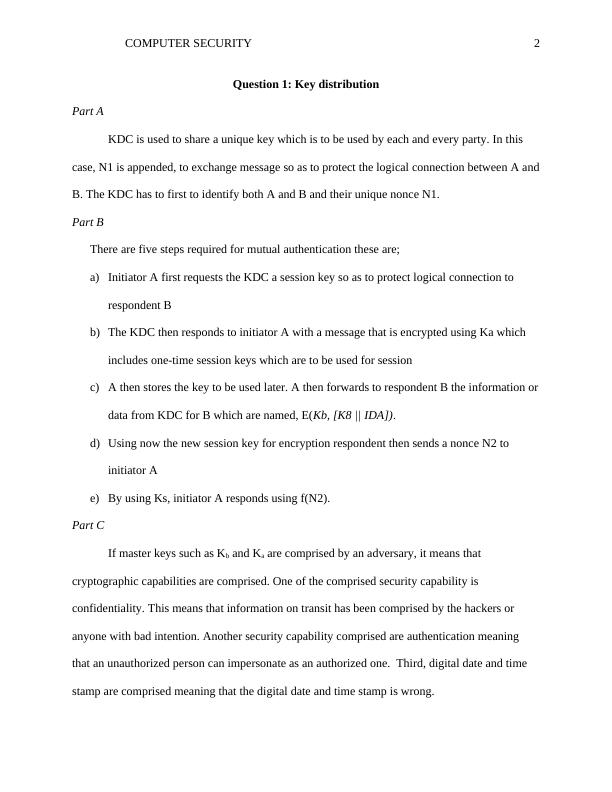Computer Security: Key Distribution and Malicious Code Threats
Answering questions related to key distribution and mutual authentication in computer and network security.
4 Pages720 Words141 Views
Added on 2023-06-03
About This Document
This article discusses key distribution and malicious code threats in computer security. It covers the steps required for mutual authentication, security threats related to USB flash disks, and security methods that can be implemented to prevent them.
Computer Security: Key Distribution and Malicious Code Threats
Answering questions related to key distribution and mutual authentication in computer and network security.
Added on 2023-06-03
ShareRelated Documents
End of preview
Want to access all the pages? Upload your documents or become a member.


